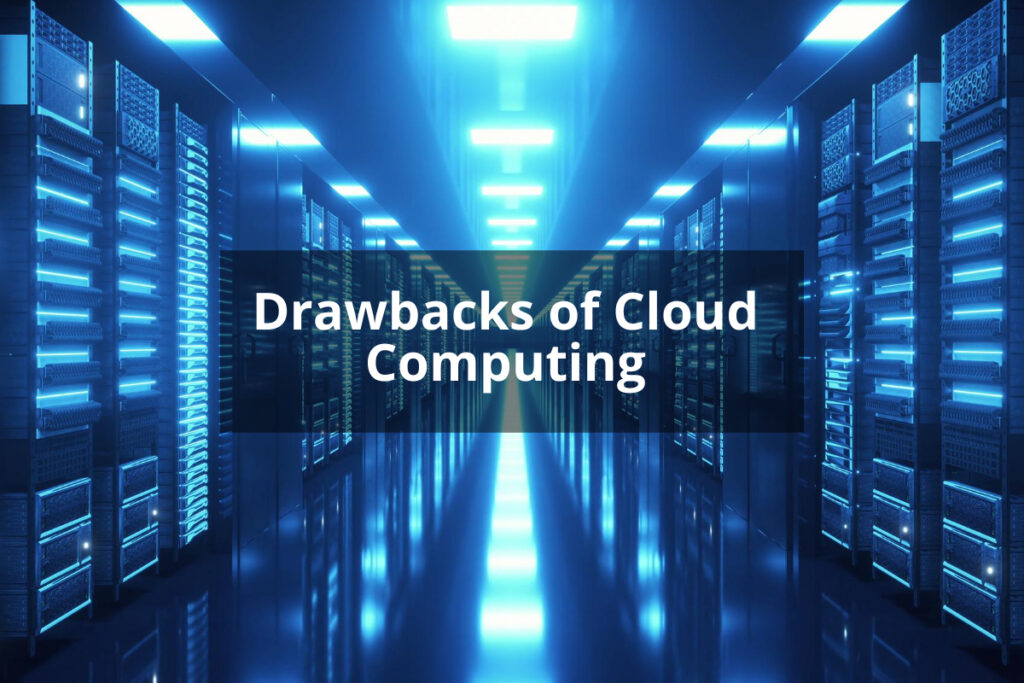Cloud computing is transforming the way organizations of all sizes store, manage, and process data. It has enabled businesses to access resources on demand, with the added benefit of scalability and improved cost efficiency. With cloud computing, companies can host applications, store data, and access services from any device connected to the internet. In this blog post, we will explore what cloud computing is, how it works, and how it can benefit businesses.

Definition of Cloud Computing
What is cloud computing?
Cloud computing is a technology that enables users to access applications and resources hosted in a remote location. It involves the delivery of computing services such as storage, networking, analytics, and software over the internet. Instead of using hardware and software on-premises, businesses can utilize cloud-based services to access their data.
History and evolution of cloud computing
Cloud computing has been around for over two decades, having first emerged in the late 1990s. Initially, it was primarily used by large organizations with extensive resources as a way to manage their IT infrastructure. In recent years, however, cloud computing has become increasingly popular among small-to-medium-sized businesses as well. As cloud services have become more affordable and accessible, more organizations are taking advantage of their benefits.
Types of cloud computing services
There are four main types of cloud computing: Infrastructure as a Service (IaaS), Platform as a Service (PaaS), Software as a Service (SaaS), and Function as a Service (FaaS). IaaS provides access to virtualized hardware resources, such as servers, storage, and networking.
PaaS is a platform that allows developers to quickly design, develop, and deploy applications. SaaS is an application-based service that enables users to access applications over the internet. FaaS allows developers to execute code in response to events or triggers.

Benefits of Cloud Computing
Advantages of cloud computing
Cloud computing offers numerous advantages for businesses. It enables organizations to save money and reduce their IT costs by eliminating the need for on-premises hardware and software. Additionally, it provides businesses with scalability and flexibility, allowing them to quickly expand or reduce their resources as needed.
Cloud computing is also highly secure, with multiple layers of security that protect data from unauthorized access. Finally, it offers increased mobility, as users can access their data and applications from anywhere.
Cost savings
Cloud computing can help businesses reduce their IT costs by eliminating the need to purchase hardware and software. Additionally, it enables organizations to pay for only the resources they use rather than having to invest in expensive upfront costs. This allows companies to save money while still being able to take advantage of the latest technologies.
Mobility
Cloud computing provides users with increased mobility as they can access their data and applications from any device connected to the internet. This eliminates the need for employees to be in a specific location in order to access resources. Additionally, cloud computing makes it easy for employees to collaborate on projects in real time, regardless of where they are located.
Security
Cloud computing offers multiple layers of security that protect data from unauthorized access. This includes data encryption, authentication protocols, and firewalls. Additionally, cloud providers use advanced monitoring technologies and access controls to ensure that only authorized users have access to sensitive information.
Scalability and flexibility
Cloud computing offers businesses increased scalability and flexibility as they can quickly add or reduce resources as needed. This allows companies to easily adjust their IT infrastructure based on changes in demand or business requirements. Additionally, cloud providers offer a range of services that can be tailored to meet the specific needs of an organization.

Drawbacks of Cloud Computing
Issues with cloud computing
Although cloud computing offers numerous advantages for businesses, there are some drawbacks associated with it as well. For example, organizations may experience issues with latency when accessing data stored in remote locations. Additionally, cloud services can be disrupted by outages or other unforeseen events that cause downtime.
Privacy concerns
Another issue associated with cloud computing is privacy concerns. Although cloud providers typically provide multiple layers of security that protect data from unauthorized access, there is still potential for misuse or abuse by malicious actors. Organizations should use extra caution when handling sensitive information such as customer data or financial records.
Security risks
Another potential issue associated with cloud computing is security risks. While cloud providers typically employ state-of-the-art security measures such as encryption and authentication protocols, there is still potential for malicious actors to gain access to sensitive information if proper precautions are not taken. Organizations should ensure that their employees are trained on best practices for securing their data in the cloud environment.
Potential for system downtime
Finally, there is always the potential for system downtime when using cloud services due to factors such as outages or maintenance issues on the part of the provider or unexpected events such as natural disasters or power outages. Organizations should have a contingency plan in place in order to minimize disruption caused by these events and ensure continuity of operations in case of an interruption in service.

Cloud Computing Applications
Business applications
Cloud computing has revolutionized how businesses operate by providing them with access to powerful tools such as analytics platforms and collaboration tools at a fraction of the cost compared to traditional solutions. Additionally, it enables organizations to quickly develop new applications without having to invest heavily in hardware and software licenses upfront.
Education applications
Cloud computing has become increasingly popular among educational institutions due to its ability to enable remote learning environments and provide students with access to online course materials anytime, anywhere. Additionally, it enables educators and administrators alike to manage large amounts of data more easily than ever before, thanks to advanced analytics tools designed specifically for educational purposes.
Healthcare applications
Cloud computing has also transformed the healthcare industry by enabling medical professionals to securely store and share patient information over the internet through electronic health records (EHRs). Additionally, it provides healthcare organizations with access to predictive analytics tools that can help them better understand patient trends and outcomes while providing personalized care recommendations based on individual patient needs.
Government applications
Finally, governments around the world have embraced cloud computing due to its ability to provide cost savings while enabling them better manage citizen data more securely than ever before thanks to its advanced security measures such as encryption protocols and two-factor authentication. Additionally, cloud services can enable governments to quickly develop new applications and services that can benefit the public at large.

Future of Cloud Computing
Industry trends
The future of cloud computing looks bright as more organizations are taking advantage of its benefits. As cloud technology continues to evolve, it is expected to become increasingly competitive as new players enter the market. Additionally, cloud providers are likely to focus on improving the user experience by providing more intuitive and user-friendly interfaces.
Potential use cases
In addition to the applications already mentioned, there are a number of potential use cases for cloud computing in the future. These include virtual reality, autonomous vehicles, artificial intelligence (AI), and the Internet of Things (IoT). Additionally, it is expected that cloud computing will continue to replace traditional on-premises solutions in many industries.
Impact on other technologies
Cloud computing is also expected to have an impact on other technologies, such as blockchain and edge computing. Blockchain technology could be used to secure data stored in the cloud, while edge computing could be used to provide faster access to data located in remote locations.
Challenges and opportunities
As with any new technology, there will be challenges associated with the adoption of cloud computing. These include security concerns, privacy issues, and the potential for system downtime due to outages or maintenance issues on the part of the provider. However, these challenges also present opportunities for organizations looking to capitalize on the advantages offered by cloud computing, such as cost savings, scalability, and flexibility.

How to Use Cloud Computing in Your Business Environment
Cloud computing can be used for a wide variety of tasks in today’s business environment. It can be used for email hosting, file storage and sharing, application development and deployment, data analytics, customer relationship management (CRM) software, enterprise resource planning (ERP) systems, online collaboration tools, and more.
Additionally, businesses should consider leveraging cloud-based services such as IaaS (Infrastructure as a Service), PaaS (Platform as a Service), and SaaS (Software as a Service) in order to maximize the benefits of cloud computing while minimizing the associated risks.
Conclusion
Cloud computing has revolutionized how businesses operate by providing them with access to powerful tools at a fraction of the cost compared to traditional solutions. It has enabled organizations to save money while still being able to take advantage of the latest technologies. Additionally, it provides businesses with increased mobility as users can access their data and applications from any device connected to the internet.
However, there are some drawbacks associated with cloud computing, such as privacy concerns and security risks, that should be taken into account when considering its use. Despite these potential issues, cloud computing will continue to shape how businesses operate in the future thanks to its scalability, flexibility, and cost savings.
References: About Cloud Computing.
